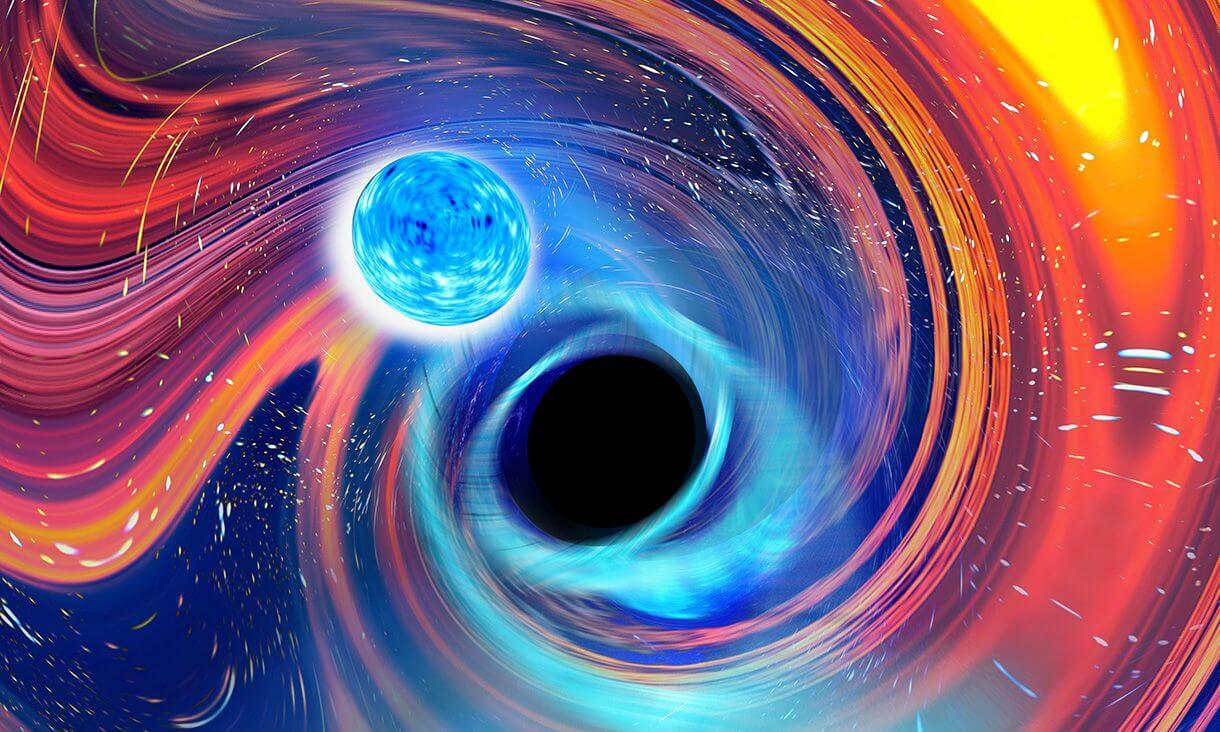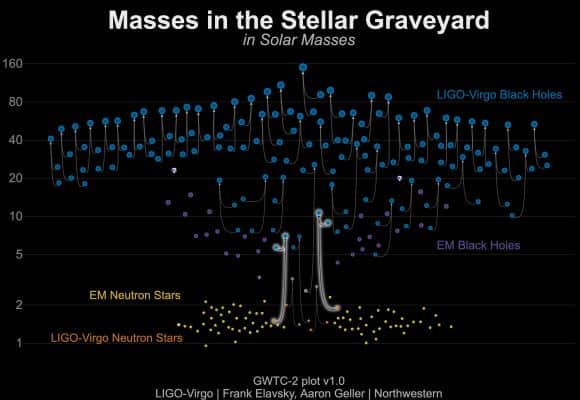A rare event that occurred in January 2020 still fascinates scientists, who are trying to learn about the structure of the neutron star with its help

The interior of a neutron star is perhaps the strangest state of matter in the universe. The matter is stressed so strongly that atoms collapse into a sea of nuclear matter. We are still not sure whether their nuclei retain their integrity in this state, or whether they melt into quark matter. To really understand the material of a neutron star we need to take it apart and see how it works and to do that we need a black hole. That's why astronomers are excited by the recent discovery of no fewer than two mergers between a neutron star and a black hole.
The behavior of a substance is determined by its equation of state. In a neutron star, this equation of state is the Tolman-Oppenheimer-Volkoff (TOV) equation. But without a better understanding of neutron star cores, its use is limited. For example, the best TOV calculation we have places an upper limit on the mass of a neutron star at about 2.16 solar masses, but the limit could be as high as 2.6 solar masses. For the TOV equation to be more accurate, we need to understand whether quark matter is formed in the core of a neutron star or even whether extreme neutron stars become quark stars.

Mergers observed with neutron star events highlighted.
Our best chance to learn this comes from observations of neutron stars colliding with black holes. When two black holes collide, they do not emit any light directly, only gravitational waves. When a neutron star collides with a black hole, only the material of the neutron star emits light as the star is torn apart. By combining optical and gravitational wave observations of such a merger, we can better understand neutron stars.
In January 2020, astronomers discovered two gravitational wave events, named GW200105 and GW200115. The first was a merger of a body with a mass of 9 solar masses with a body with a mass of 1.9 solar masses, and the second was a merger of a body with a mass of 6 solar masses with a body with a mass of 1.5 solar masses. The smaller mass in both of these cases is too large to be a white dwarf, but well below the neutron star mass limit. They are therefore the first confirmed mergers between black holes and neutron stars. This is a very important thing that will allow a deeper understanding of neutron stars.
Unfortunately, when astronomers looked for optical events that matched the gravitational events, they found none. So it is impossible to combine optical and gravitational data of these mergers. But the team was able to calculate the odds of finding similar mergers in the future. If the two consecutive events were not a rare coincidence, we can expect to see about 50 events per year.
The next series of LIGO and Virgo observations will be in the summer of 2022. If we're lucky, it will give us the first detailed look at the interior of a neutron star.
More of the topic in Hayadan:

One response
They did not find parallel optical events? how not? It's just there, they don't think that there were no emissions in the optical spectrum.